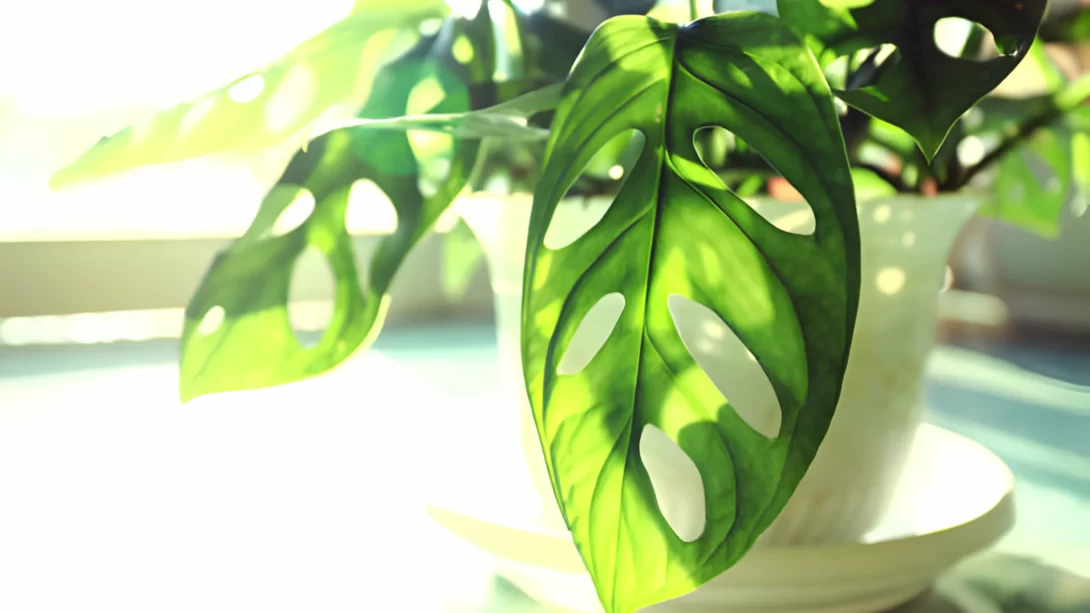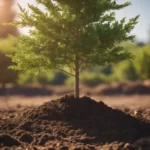The Monstera adansonii, commonly known as the Swiss Cheese Plant, is a popular houseplant cherished for its distinctive, perforated leaves. Propagating Monstera adansonii not only helps in maintaining the health and vigor of the plant but also allows plant enthusiasts to expand their collection or share with friends. This guide will delve into the rewarding process of propagating Monstera adansonii, ensuring even beginners can achieve success.
Monstera Adansonii Growth Habits
Monstera adansonii exhibits a climbing growth habit, with its stems producing aerial roots and leaves developing characteristic holes as they mature. A key aspect of successful propagation is understanding the plant’s structure, particularly the nodes. Nodes are the points on a stem where leaves and roots grow. For successful propagation, identifying and cutting at these nodes is essential.
Tools and Materials Needed for Propagation
Preparing the right tools and materials is the first step in the propagation process. You’ll need sharp scissors or pruning shears, a clean pot with fresh potting mix, and optionally, rooting hormone. Sterilizing your cutting tools is crucial to prevent the spread of disease to the new cuttings. Choose a pot with adequate drainage and a potting mix that offers good aeration and moisture retention, suitable for tropical plants like Monstera.
Propagation Through Stem Cuttings
The most effective way to propagate Monstera adansonii is through stem cuttings. Select a healthy section of the plant, ideally with at least one node and one leaf. The ideal cutting length is about 4-6 inches. Make a clean cut just below a node using your sterilized scissors or shears. This node is where new roots will form. It’s important to choose a cutting with healthy leaves and no signs of pests or disease.
Rooting the Cuttings
Once you have your Monstera adansonii cuttings, the next step is to root them. There are several methods to do this: rooting in water, directly in soil, or using a sphagnum moss medium.
Rooting in Water
- Place the cutting in a jar or vase filled with water, ensuring the node is submerged.
- Change the water every few days to keep it fresh and reduce the risk of rot.
- Roots typically begin to appear in 2-4 weeks.
Rooting in Soil
- Plant the cutting directly into moist, well-draining potting mix.
- Keep the soil consistently moist but not waterlogged.
- Rooting in soil can sometimes be quicker than in water but requires careful monitoring to prevent rot.
Rooting in Sphagnum Moss
- Wrap the node in damp sphagnum moss, then place it in a plastic bag to create a humid environment.
- Keep the moss moist and watch for root growth, which can be slower than other methods but highly effective.
Planting Rooted Cuttings
Once the cuttings have developed a healthy root system, they are ready to be planted in soil. Choose a pot that is slightly larger than the root ball with good drainage. Use a high-quality potting mix suitable for tropical plants. Plant the cutting at the same depth it was growing before and water it thoroughly. It’s important to ensure the newly planted cutting is not exposed to direct sunlight immediately, as this can cause stress. Gradually acclimatize the plant to its new environment.
Post-Propagation Care
After successfully planting your propagated Monstera adansonii, the focus shifts to providing optimal care to ensure healthy growth. Here are some key aspects to consider:
Watering
- Newly planted Monsteras require consistent moisture. Water when the top inch of soil feels dry to the touch. Avoid overwatering, as this can lead to root rot.
Lighting
- Monstera adansonii thrives in bright, indirect light. Direct sunlight can scorch the leaves, while too little light can slow growth and reduce leaf fenestration (development of holes).
Feeding
- Feed your Monstera adansonii with a balanced, water-soluble fertilizer every 4-6 weeks during the growing season. Reduce feeding in the winter months when growth slows down.
Encouraging Fenestration
- Adequate light and proper care encourage the development of the characteristic holes in the leaves. Young plants often start with solid leaves, developing fenestrations as they mature.
Monitoring for Pests and Diseases
- Keep an eye out for common houseplant pests like spider mites, aphids, and mealybugs. Regular inspections and prompt treatment are crucial. Also, be mindful of signs of overwatering, such as yellowing leaves or a musty smell from the soil, indicating potential root rot.
Troubleshooting Propagation Issues
Propagation can sometimes present challenges. Here are common issues and their solutions:
Rotting Cuttings
- If a cutting starts to rot, it’s often due to too much moisture. Let the cutting dry out slightly and try rooting again, ensuring better air circulation and less frequent watering.
No Root Development
- In cases where roots are slow to develop, check environmental conditions. Ensure the cutting is in a warm, humid environment with adequate but not excessive moisture.
Conclusion
Propagating Monstera adansonii is a fulfilling activity that not only expands your plant collection but also deepens your understanding of plant care. With patience and attention to detail, you can nurture your cuttings into mature, thriving plants. Experiment with different propagation methods to see which works best for you and your Monstera.




